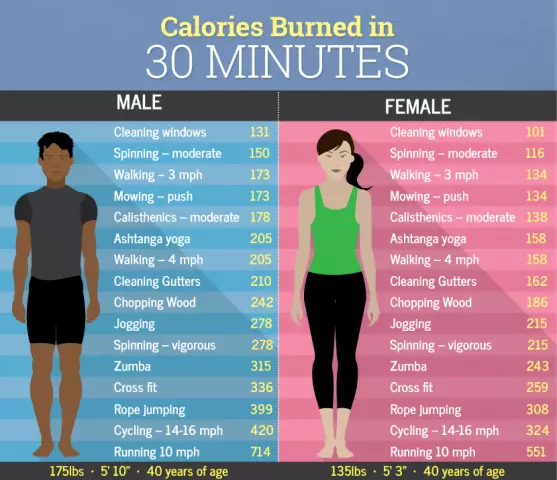- Author Rachel Wainwright [email protected].
- Public 2023-12-15 07:39.
- Last modified 2025-11-02 20:14.
Is it possible for a child to walk with bronchitis
The content of the article:
- Walking with bronchitis
- What is bronchitis and why does it occur
- How does bronchitis manifest?
- Video
Walking with bronchitis or staying at home - this question is of interest to many patients suffering from acute or chronic bronchial inflammation.
There is no universal answer in this situation: the possibility of walking depends on the severity of the inflammatory process, the presence or absence of bronchial obstruction, the phase of the disease and many related factors.

Walking with bronchitis is allowed under certain conditions
To understand in what situations walks with bronchitis are allowed, and when it is better to abstain from them, it is necessary to understand the basics of the disease and the mechanism of its development.
Walking with bronchitis
If there is no temperature, signs of respiratory distress or painful, debilitating coughing fits with bronchitis, you can go outside.
Why is it not recommended to do it in the listed cases? In such situations, any physical activity imposes an additional burden on the main organs of life, thereby increasing the risk of complications.
Is it possible for a child to walk with bronchitis? In the event that there is no hyperthermia and the child feels satisfactory, walks are allowed. But there are some limitations:
- Long-term outdoor exposure is not recommended in winter. This is due to the vulnerability of the inflamed bronchial mucosa and the risk of complications. Walking time should be limited to 10-30 minutes. It is necessary to ensure that the child inhales through his nose, to prevent hypothermia of the body.
- Avoid walking in cold, wet weather. When the weather is cool but dry, the child can be safely taken outside.
- If the ambient temperature is -10 ° C or less, it is also better to refuse to walk.
- The neonatal period.
Dr. Komarovsky definitely advises taking short walks with the child if there are no specified restrictions or contraindications. At the same time, it is necessary to avoid visiting massive crowds of people (shopping centers, markets, entertainment venues), traveling by public transport.
The question often arises as to whether it is possible to take a child to the kindergarten or school if there is a cough, but there is no temperature? The answer is no, contacts must be limited as much as possible until complete recovery.
What is bronchitis and why does it occur
Bronchitis is an inflammation of the mucous membrane of the bronchial tree without involvement of the lung tissue in the pathological process.
At the same time, a number of structural and functional changes occur:
- special cells that produce bronchial mucus, produce it in excessive quantities, sputum is formed;
- the physical and chemical properties of the secret change, it becomes viscous and thick;
- the cilia of the ciliated epithelium cannot cope with the elimination of altered mucus, it stagnates, enveloping the walls of the bronchi;
- stagnant contents irritate the receptors of the mucous membrane, a cough appears.
In the case when the presence of phlegm does not obstruct the passage of air, bronchitis is called simple. However, in some situations, an increase in the tone of the smooth muscles of the bronchi joins the inflammation of the mucous membrane, their lumen narrows. Thick, difficult to separate phlegm clogs the lower parts of the respiratory tree, the efficiency of gas exchange drops significantly. Such bronchitis, accompanied by blockage of the bronchi, is called obstructive.
There are several reasons for the development of the disease:
- damage to the bronchi by pathogenic microorganisms (bacteria, viruses), while microbes colonize the mucous membrane and begin to multiply in the epithelial cells, causing inflammatory changes;
- exposure to occupational hazards (hot air, dust, vapors of aggressive chemicals, etc.);
- long experience of smoking (both active and passive);
- abuse of alcoholic beverages;
- living in regions with aggressive climatic conditions;
- unfavorable ecological situation;
- hereditary constitutional features.
Bronchitis can be acute, resolving within 10-14 days, or chronic. In the second case, the cough bothers the patient for at least three months a year (in total) for two or more years. The chronic process proceeds in waves: with periods of exacerbations and remissions. In severe cases, the symptoms of the disease persist constantly even without exacerbations.
How does bronchitis manifest?
The main manifestation of the disease is a cough accompanied by sputum discharge. With an obstructive process, especially with a chronic course and its long experience, patients are also worried about shortness of breath.
At the initial stage of the disease, the cough is dry, unproductive, sputum is scanty. As the inflammatory process resolves, the cough becomes more active, acquires a moist character, the amount of sputum secreted increases. This transformation indicates the beginning of recovery. Strengthening the separation of sputum is associated with an improvement in its discharge from the bronchial tree.

In winter, walking time with bronchitis should be limited to 10-30 minutes
In addition, patients with bronchitis are worried about weakness, drowsiness, decreased exercise tolerance, and a state of weakness. Headache, dizziness, sleep disturbances may occur.
Neither an increase in body temperature, nor concomitant symptoms from the ENT organs (runny nose, congestion and sore throat, tickling, sneezing, etc.) are not specific signs of bronchitis. Most often, they talk about the infectious nature of the disease. With bronchitis, the body temperature does not rise or is fixed at around 37-37.5 degrees. Severe hyperthermia also indicates an active infectious process or the development of purulent inflammation.
Video
We offer for viewing a video on the topic of the article.

Olesya Smolnyakova Therapy, clinical pharmacology and pharmacotherapy About the author
Education: higher, 2004 (GOU VPO "Kursk State Medical University"), specialty "General Medicine", qualification "Doctor". 2008-2012 - Postgraduate student of the Department of Clinical Pharmacology, KSMU, Candidate of Medical Sciences (2013, specialty "Pharmacology, Clinical Pharmacology"). 2014-2015 - professional retraining, specialty "Management in education", FSBEI HPE "KSU".
Found a mistake in the text? Select it and press Ctrl + Enter.






